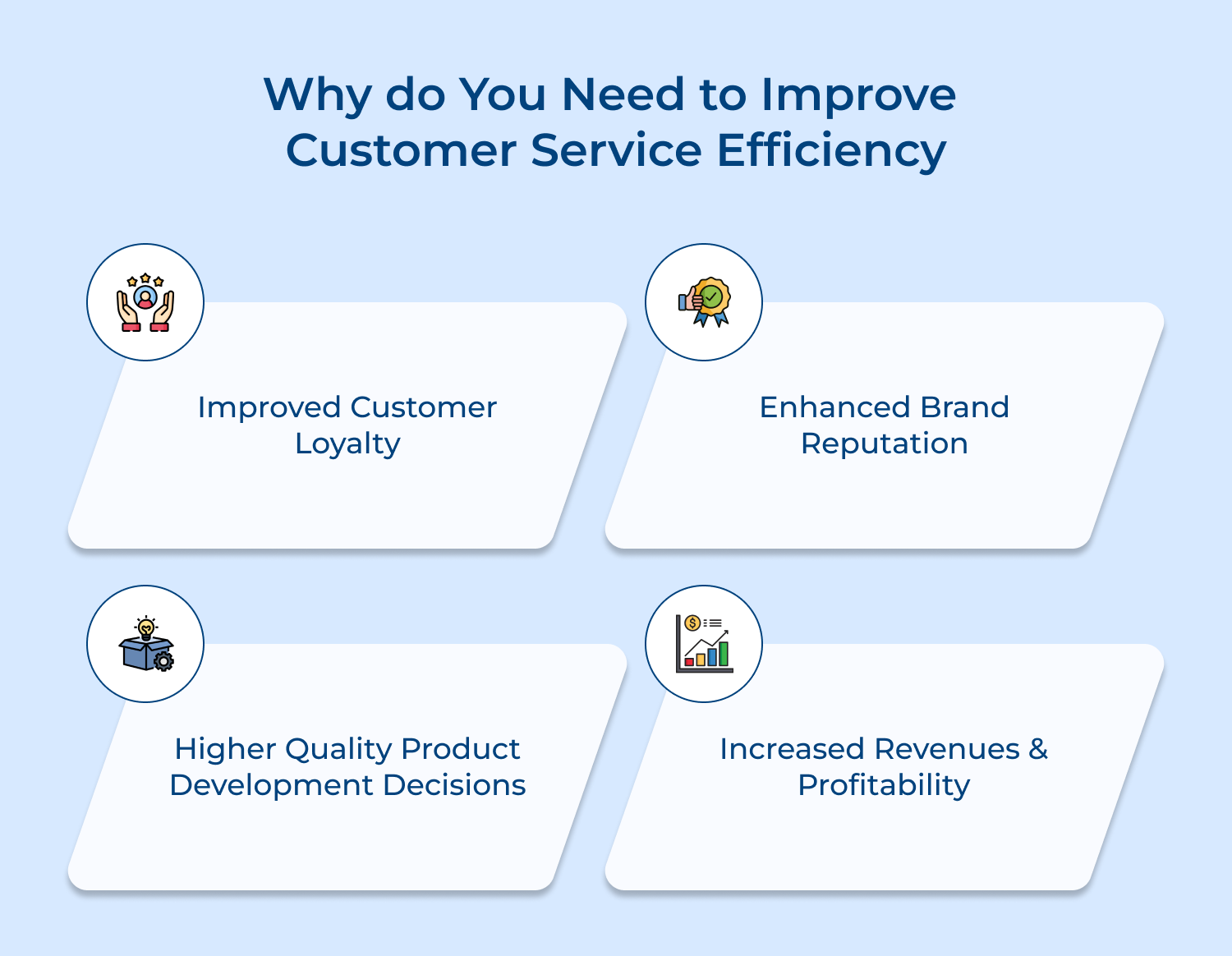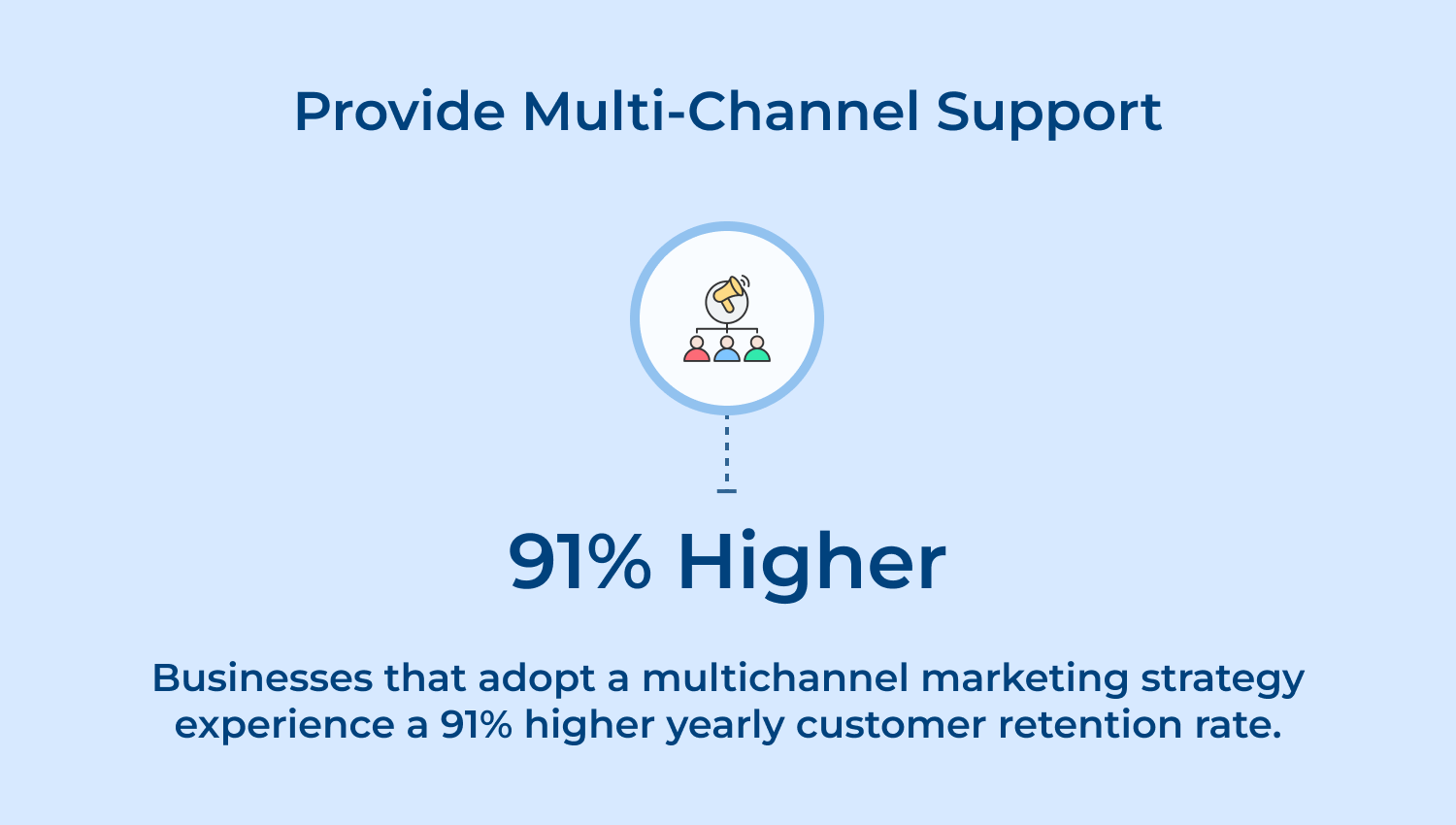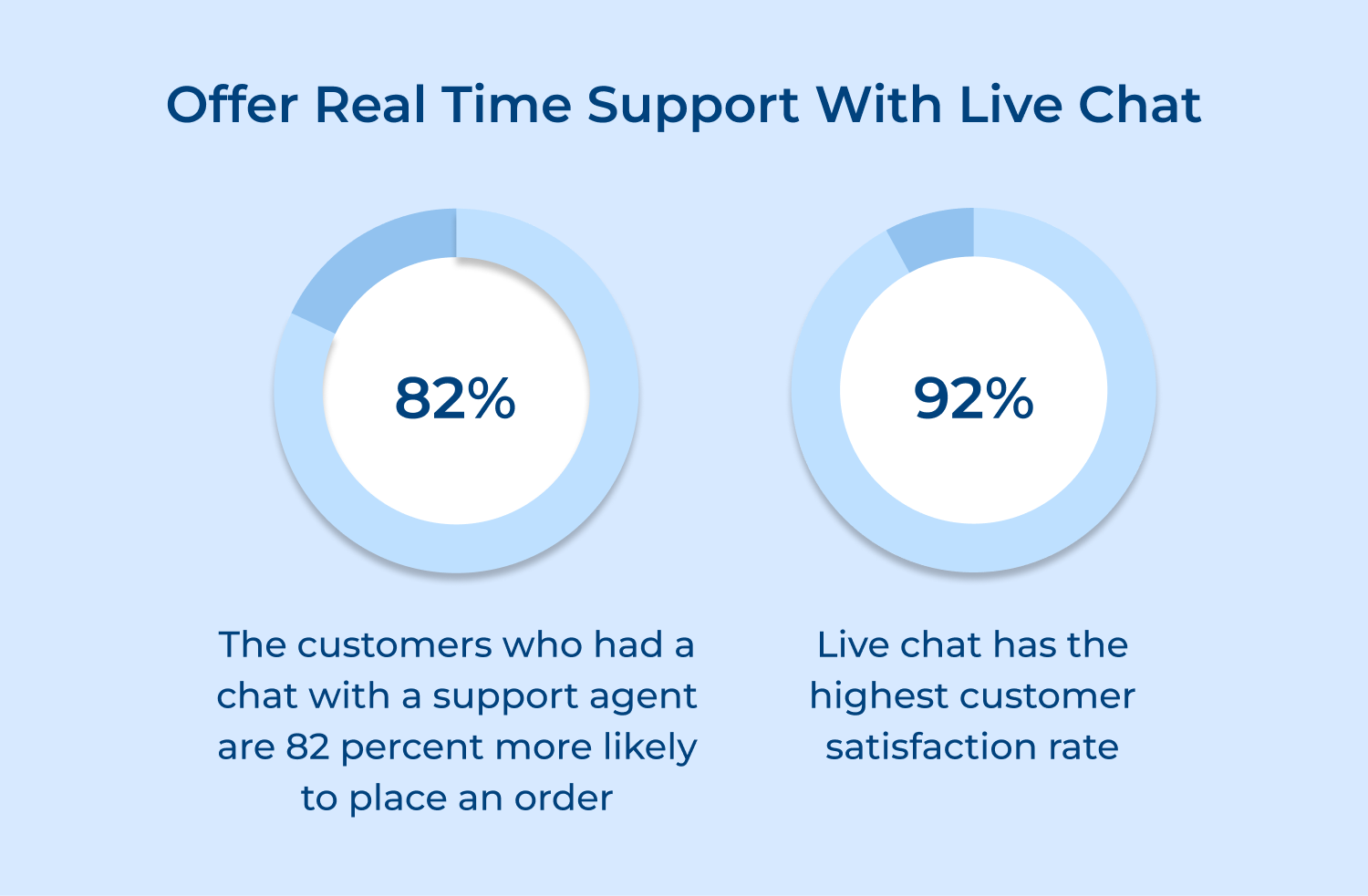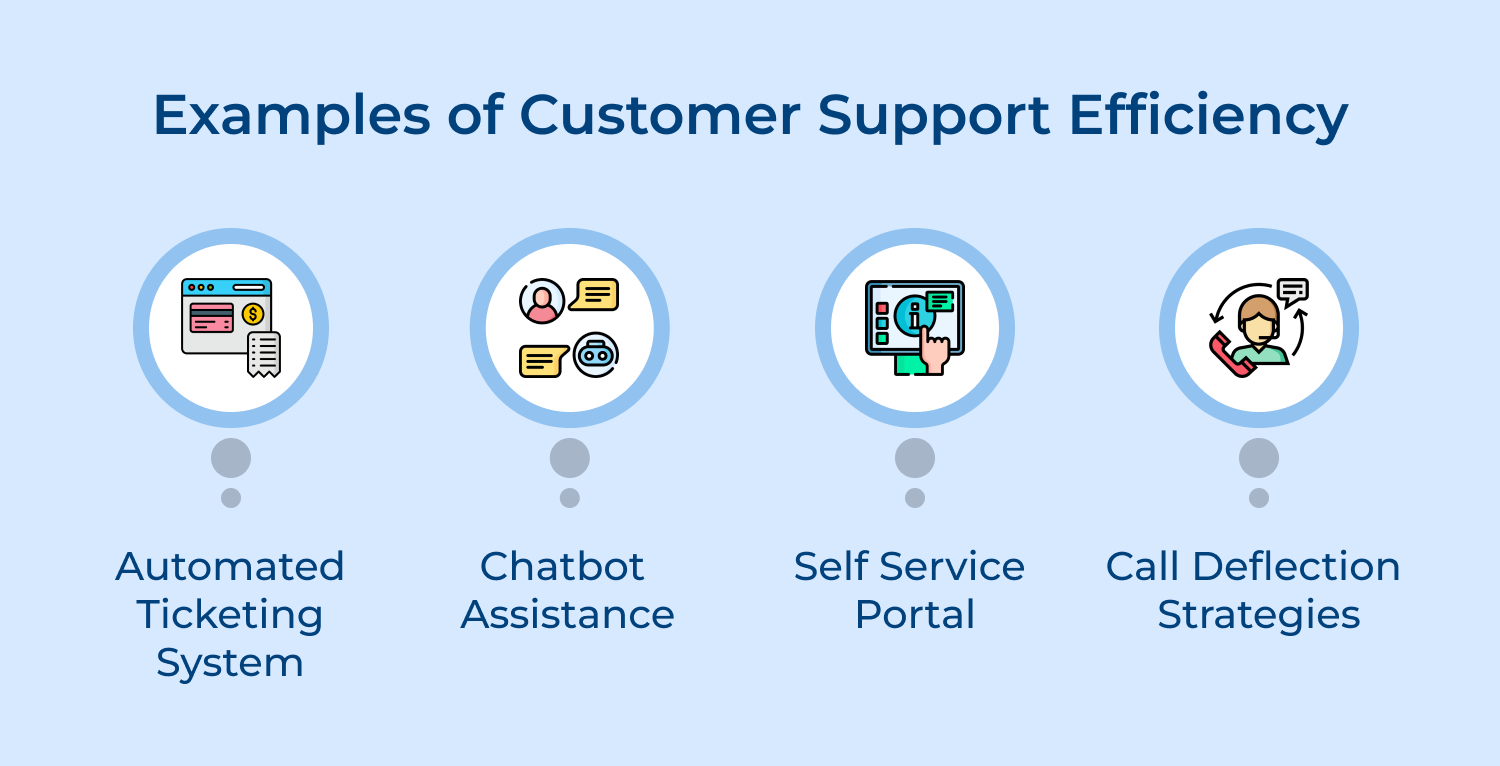AI-powered bots can handle basic queries like account information, order status, and refunds, allowing support reps to focus on resolving more complex issues. Automated bots help build relationships by providing personalized support based on your customers’ individual preferences and needs.
Pro tips:
- Train your chatbots effectively: AI bots require training to provide accurate responses. Invest in training your chatbots with real customer interactions and continuously update their knowledge base.
- Learn from analytics: Utilize analytics tools to measure the effectiveness of your AI and chatbot solutions. Monitor response times and customer satisfaction rates as well as identify areas for improvement.
4. Route Requests to the Right Team for Faster Responses
Having the right team/department assigned to each request should be a top priority when it comes to delivering efficient customer service. Routing incoming requests correctly helps in resolving issues faster because of the agent’s expertise.
Ensuring that the requests are routed correctly ensures better speed and accuracy when responding so that there’s minimal back-and-forth between staff members trying to figure out who should handle which type of request.
Pro tips:
- Utilize skills-based routing: Assign incoming requests to the most suitable agent based on their skills and expertise. By routing requests to agents who have specific knowledge or experience in handling certain types of inquiries, you can ensure faster and more accurate responses.
- Implement intelligent automation: Incorporate intelligent automation tools, such as chatbots or virtual assistants, that can handle and route basic inquiries. By automating simple requests, you can free up valuable human resources to focus on more complex issues.
5. Automate Customer Service Processes
Significantly reduce the amount of time it takes to answer a customer inquiry by automating customer service processes. Using automated solutions like live chatbots, customers can quickly get answers to simple inquiries without ever needing to speak with customer service.
Pro tips:
- Invest in robust customer service software: Choose reliable and comprehensive customer service software that provides automation capabilities. Look for features like workflow management, ticketing systems, and integration with other tools.
- Personalize automated responses: Customize your automated responses to ensure they feel personalized and not like generic templates. Use customer insights to address customers by name, refer to their specific issues and provide relevant solutions.
6. Give Customers the Options of Self-Service Tools
Self-service tools like FAQs and knowledge bases are important tools in any business’s customer service arsenal. It allows customers to find answers to their questions quickly and easily.
67% of customers prefer self-service over speaking to a support agent.
The tools also free up resources in your customer service department that would otherwise be allocated towards answering simple inquiries such as how to reset a password or how-to instructions on specific product features or functions.
Pro tips:
- Offer a knowledge base: Create an online knowledge base that contains frequently asked questions, tutorials, troubleshooting guides and other relevant information. It will empower customers to find solutions on their own.
- Offer online chat communities: Create online forums or communities where customers can interact with each other, ask questions and share experiences. It encourages self-service and fosters a sense of community among your customers.
7. Use Data Analysis to Identify Opportunities for Improvement
Using data from past interactions with customers can show you where you have been falling short in terms of providing great customer service. It can give you insight into what changes need to be made to improve the efficiency of your customer service operations moving forward.
Pro tips:
- Identify trends and patterns: Analyze your data to identify any recurring trends or patterns. Look for correlations, outliers, or any other noteworthy observations. These insights can provide valuable information about consumer behavior, market trends, or campaign performance.
- Monitor KPIs: Key Performance Indicators (KPIs) and metrics help to measure the success of your marketing efforts. By monitoring KPIs regularly, you can identify areas that require improvement and make data-driven adjustments to optimize your performance.
8. Invest in Right Tech Tools
Technology has revolutionized both our personal lives and our professional ones, cloud based software solutions are no exception. Storing data online means access from anywhere with an internet connection, plus much more control over security settings than traditional hard drives offer.
Pro tips:
- Research and compare: Conduct thorough research to identify the tech tools – compare different options based on their features, pricing, customer reviews and support services.
- Evaluate cost vs. value: Consider the cost of the tech tool and the value it can bring to your business. Calculate the return on investment (ROI) and assess whether the benefits outweigh the expenses in the long run.
- Trial periods: Whenever possible, take advantage of trial periods offered by tech tool providers. It allows you to test the tool firsthand and evaluate its performance before committing to a long-term investment.
9. Create a Positive & Collaborative Team Culture
Creating a positive work environment plays an incredibly huge role when it comes to optimizing employee engagement for any company organization. Especially when it comes down to handling touchy topics such as customer relations.
Positive reinforcement goes a long way towards improving morale amongst team members which then trickles downstream towards providing better overall ‘customer experiences’ every step of the way.
Pro tips:
- Encourage diversity and inclusion: Embrace diversity in your team. Different perspectives can lead to innovative solutions and better decision-making. Ensure that everyone feels valued regardless of their differences.
- Provide ongoing support and development: Offer coaching, training, and development opportunities to help team members grow both personally and professionally. Continuous learning enhances individual capabilities and collective team performance.
10. Collect Customer Feedback
The best way to know what improvements and changes need to be made when it comes to customer experience is by collecting feedback directly from customers themselves. It can be done through surveys after a purchase or phone calls after learning about issues they may have had with a product or service.
Businesses will be able to modify products, services, processes and policies as necessary by collecting more feedback from their customers.
Pro tips:
- Personalize the approach: Tailor your feedback requests based on the customer’s previous interactions or purchases. It shows that you value their individual experience and increases the likelihood of receiving honest feedback.
- Ask open-ended questions: Alongside closed-ended questions (such as rating scales), include open-ended questions that prompt customers to elaborate on their experiences. These qualitative insights can provide invaluable details and suggestions for improvement.
11. Maintain a Consistent Brand Messaging
Businesses should ensure that all their team members are delivering the same message when it comes to communicating with customers. Oftentimes brands forget the step which leads to mixed messaging, sending out one message through emails while saying something else over the phone.
Ultimately confusing customers and making them lose trust in the brand. Businesses must work together across channels and divisions so that everyone is on the same page about the brand’s messaging when it comes time for customer communication.
Pro tips:
- Align your messaging with your brand’s mission and values: Ensure every piece of content you create reflects your brand’s core purpose. It will help your audience connect with your brand on a deeper level.
- Train your team: Ensure that everyone associated with your brand, from employees to partners, understands your brand guidelines and messaging. Consistency should be maintained in all internal and external communications.
10 Best Practices for Customer Service Efficiency
Providing efficient customer service is crucial to maintaining a loyal customer base and attracting new customers.
- Use technology to your advantage: Invest in customer service software and tools that can streamline processes. These tools can include ticketing systems, live chat software and customer relationship management (CRM) platforms.
- Train your employees: Provide comprehensive training to your customer service team to ensure they have the skills to handle customer queries and resolve issues efficiently. Regular training sessions will also keep them updated on new products, services and policies.
- Implement self-service options: Offer customers the option to find answers to their inquiries through self-service options such as an FAQ section on your website or a chatbot. It frees up your customer service team’s time to focus on more complex issues.
- Foster a customer-centric culture: Ensure that all employees, not just the customer service team, understand the importance of providing excellent customer service. Encourage a customer-centric mindset throughout the organization.
- Gather customer feedback: Regularly seek feedback from your customers to identify areas where your customer service can be improved. Use customer satisfaction surveys, online reviews, or social media listening tools to gather valuable insights.
- Streamline communication channels: Consolidate your communication channels, such as phone, email and social media, into one unified system. It ensures that customer inquiries are centralized, preventing any communication gaps or delays.
- Set up an escalation process: Establish a clear process for escalating customer issues when they cannot be resolved by the front-line customer service team. It ensures that problems are promptly addressed and resolved by the appropriate personnel.
Examples of Customer Support Efficiency
In view of technological advancement, companies are turning to efficient customer support solutions to ensure their customers’ expectations are met rapidly and effectively.










